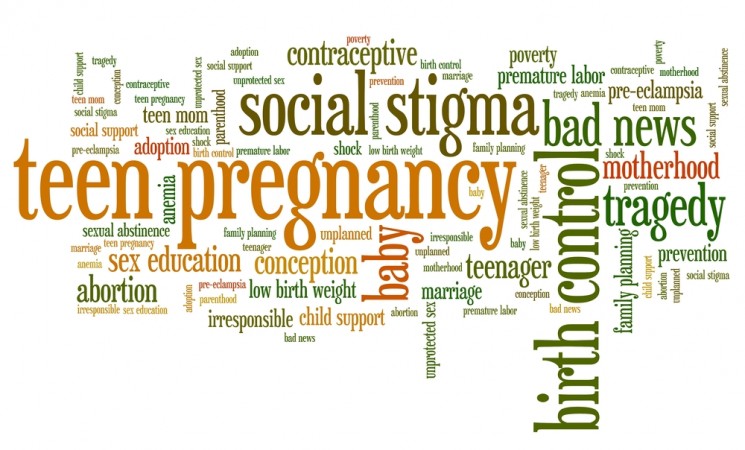Archived Content
This page is archived and provided for historical reference. The content is no longer being updated, and some of the information may have changed over time and could be outdated or inaccurate.

By Stefanie Mollborn, Ph.D.
Research on health behavior and health policy is focusing increasingly on cultural influences. For example, the Robert Wood Johnson Foundation’s 2015 annual theme was building a culture of health. At the heart of attempts to change cultures of health are social norms—shared expectations for behavior accompanied by negative sanctions if people violate those expectations.
Norms can be important influences for health behaviors, but changing social norms about health behavior is often difficult. Christie Sennott and I investigated this problem in our article, “Bundles of Norms about Teen Sex and Pregnancy,” published in Qualitative Health Research.
We analyzed 57 interviews with youth from a variety of geographic locations and social backgrounds, asking them to reflect on their communities’ norms around teen sexuality and pregnancy during high school. Teen pregnancy is an interesting health behavior for studying social norms because it is prevalent, morally contested, and often highly stigmatized. We sought to learn how norms around teen sexuality and pregnancy play out in a variety of communities across the United States. By studying norms “in the wild” instead of in a laboratory, we can capture their complexity and try to understand why social norms are such an elusive target for policy efforts.
Our research resulted in several findings that have implications for understanding how social norms work and how they can be changed.
First, a norm regulating a single health behavior cannot be understood without considering whether it is part of a “bundle” or “set” of related norms. In the case of teen pregnancy, a set of related norms regulates the chain of behaviors that lead to teen parenthood: heterosexual intercourse, contraception, pregnancy, abortion, and childbearing.
Second, communities’ normative messages about the different sexual behaviors in the norm set are often inconsistent. Many of our young interviewees could easily articulate the internally conflicting messages they heard from adults. Norms in many communities simultaneously discouraged teen sex, abortion, pregnancy, and sometimes contraception. If teens conformed to the norm against sex, they could avoid violating norms. But once teens in some communities were sexually active, every behavioral choice (e.g., contracepting versus not, aborting or not once pregnant) was discouraged.
Third, although no communities encouraged teen sex or pregnancy, there was a lot of variation in norms about teen sexuality. Each community articulated an underlying “rationale” that explained why the set of norms held by the community was appropriate. The prevalence of conservative religion predicted whether the rationale communicated was practical—focusing on avoiding risky sexual behaviors that could jeopardize a teen’s future—or moral—focusing on the morality of premarital sex and abortion. Different norms result from different rationales. Abortion tends to be accepted as a last resort in communities with a practical rationale, but anti-abortion norms are strong among communities with a moral rationale.
Fourth, although there were important differences in norms about appropriate behaviors in different communities, the link between norms and teens’ actual behaviors was weak. Despite teen sex being discouraged everywhere we studied, most U.S. teens have sex by the end of high school. Whether this sexual activity results in pregnancies carried to term was predicted more by community-level socioeconomic status than by the community’s norms. Teens from better-off communities were less likely to have children.
Finally, our interviewees reported high levels of anxiety about sex and pregnancy among U.S. teens. Many perceived that community norms were inconsistent and that the only way to avoid potentially damaging social sanctions was to remain sexually abstinent. Yet most did end up having sex. Because there is so much silence and stigma around teen sexuality, compared to teens in peer countries, sexually active U.S. teens’ contraceptive use is sporadic and involves relatively ineffective methods. Researchers believe this is a major reason why our teen birth rate, while falling in recent years, is still relatively high.
Our research has found that social norms against teen sexuality are often ineffective and may even be counterproductive by stifling information flows. But some communities’ norms changed relatively easily once community members were motivated to change them. By locating a health behavior norm within a set of related norms with an underlying rationale, we can better understand why the norm is supported. Targeting the rationale may help norms change by altering people’s perceptions of why a norm is appropriate. Understanding that there is a lot of local variation not just in health behaviors, but in norms and rationales underlying them, can improve policy efforts as well. Finally, recognizing the link between norms and open communication leads to a more nuanced understanding of the dangers of policies that simply seek to strengthen norms against that behavior. Changing cultures of health is a complicated enterprise, and understanding more about how social norms work can help us strive toward that goal.
Note
The Eunice Kennedy Shriver National Institute of Child Health and Human Development (NICHD)-funded University of Colorado Population Center (P2C HD066613) provided development, administrative, and computing support. The content is solely the responsibility of the author and does not necessarily represent the official views of the NICHD or the National Institutes of Health.
About the Author
 Stefanie Mollborn, Ph.D.
Stefanie Mollborn, Ph.D.
Stefanie Mollborn is an Associate Professor in the Institute of Behavioral Science and the Department of Sociology at the University of Colorado Boulder. She received her Ph.D. in Sociology from Stanford University in 2006. Her research focuses on the health behaviors of U.S. children and youth, including teen parenthood. She just completed a book building on the ideas summarized here. Mollborn’s currently funded mixed-methods research project is on the development of health lifestyles in childhood and adolescence. She has received the Distinguished Early Career Award from American Sociological Association’s Section on Children and Youth, as well as outstanding publication awards in social psychology and aging and the life course. Please see her web page for more information, or contact her via email ([email protected]) or on Twitter (@smollborn).
Featured Photo Credit: Tupungato/Shutterstock








